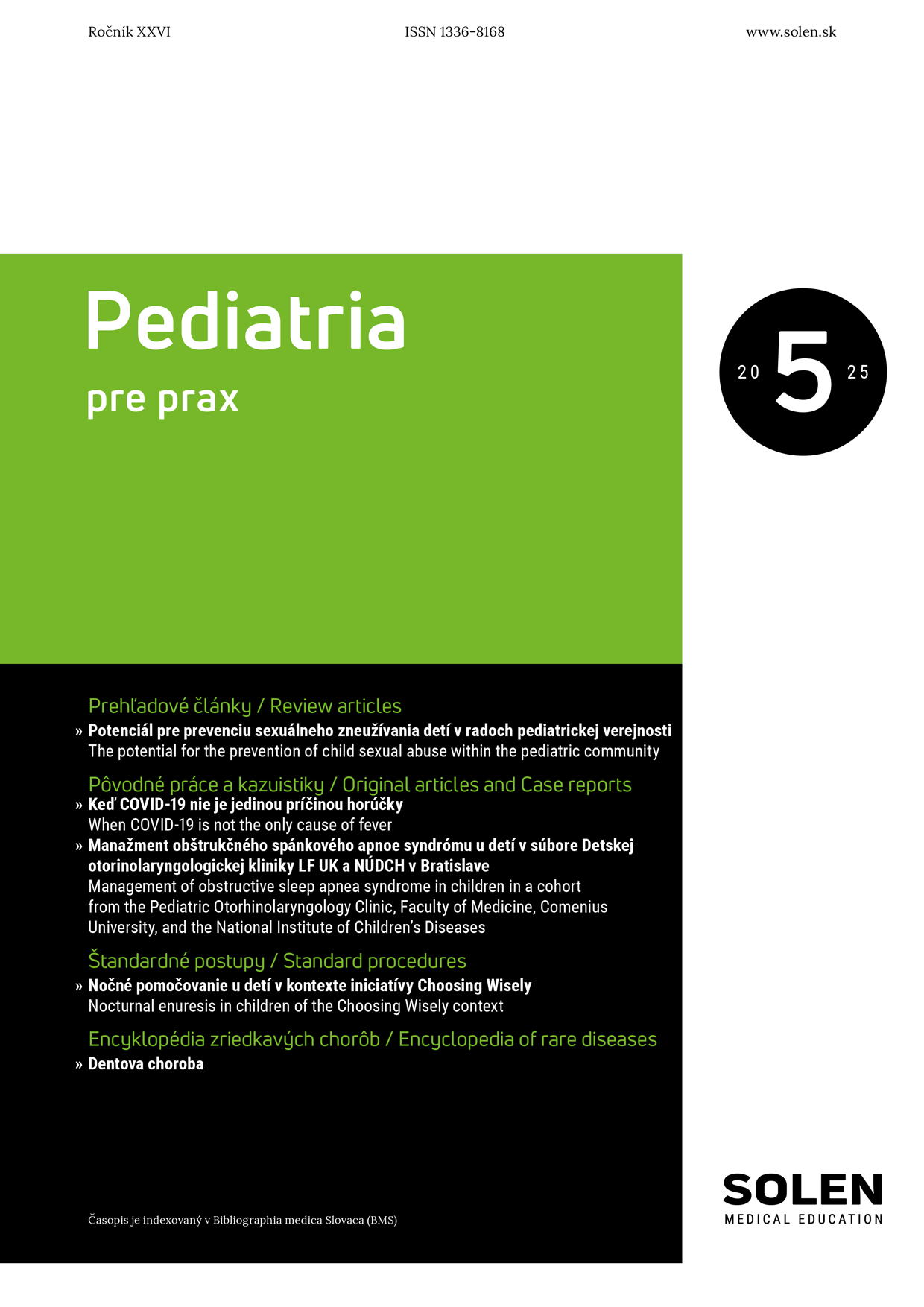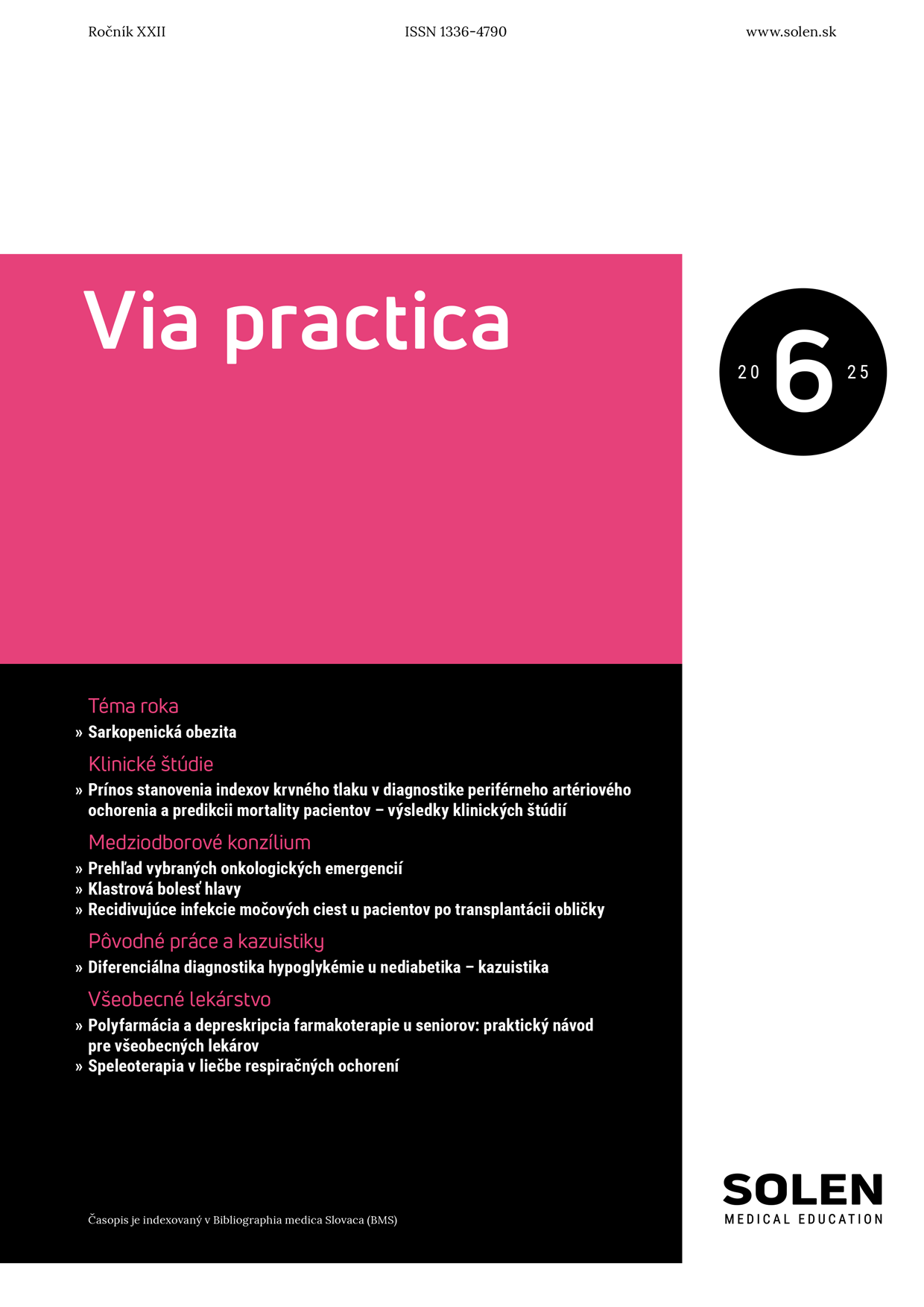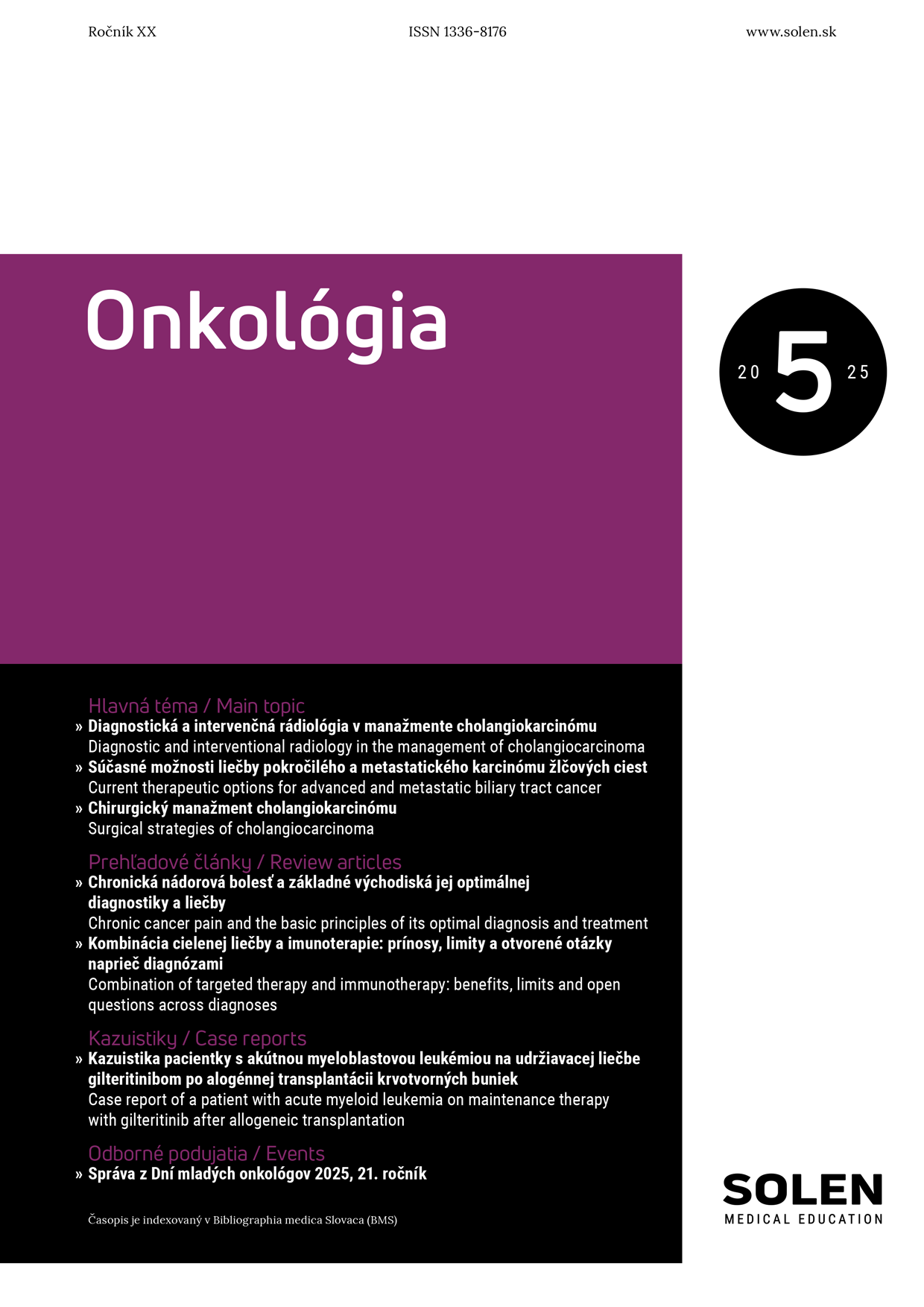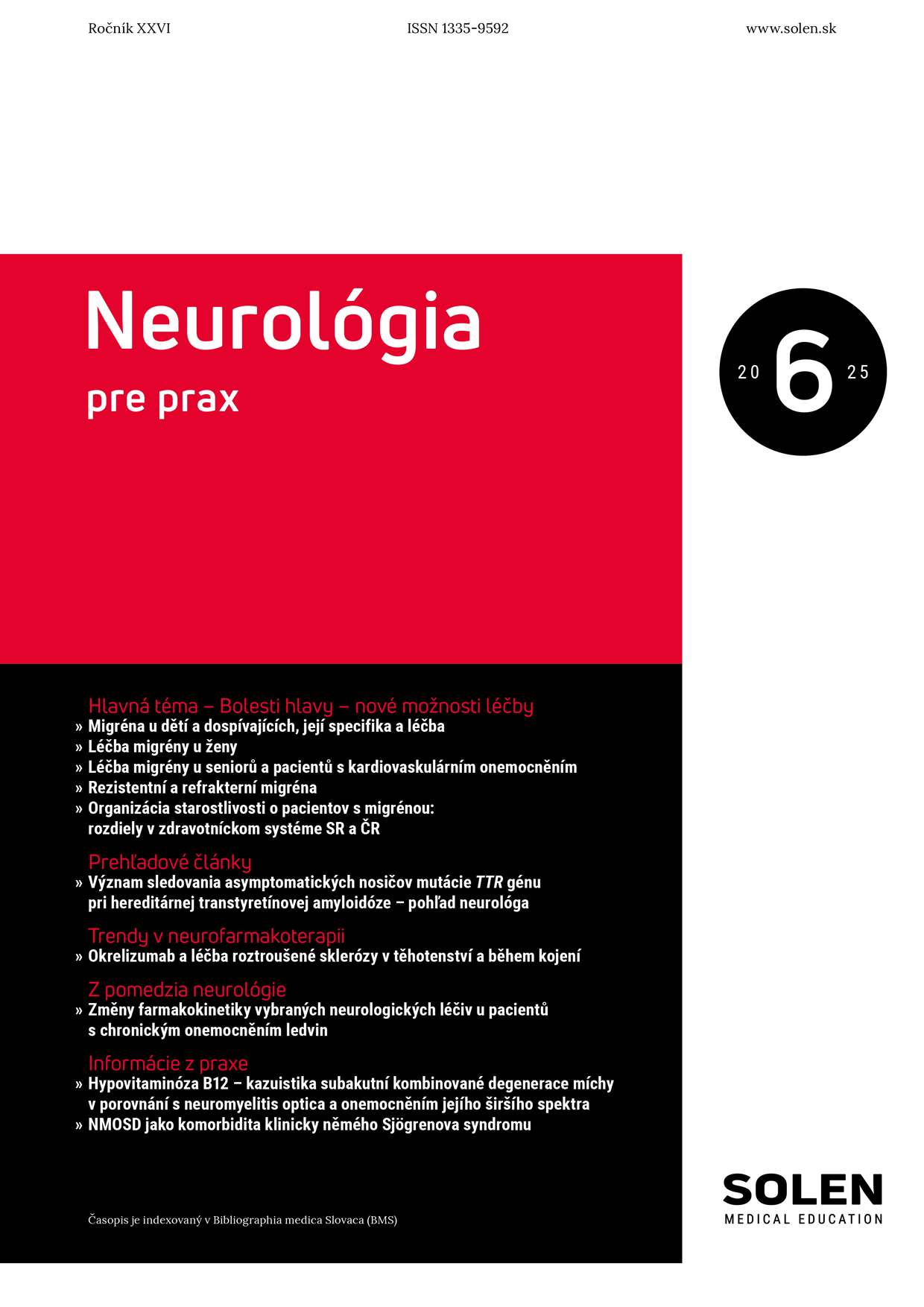Neurológia pre prax 2/2015
Treating epilepsy and epilepsy syndromes in children
Epilepsy is a chronic brain disease characterized by seizures and a persistent predisposition to developing them as well as by neurobiological, cognitive, and psychosocial consequences of this condition. Epilepsy is not a nosological entity; it is a group of conditions with varying aetiology, clinical presentation, course, and treatment. The goal of antiepileptic treatment is to achieve a seizure-free state, without affecting mental and physical performance. Treatment is predominantly pharmacological, using antiepileptics. The choice of an antiepileptic drug depends on the type of seizures, but in particular on the type of epilepsy or epilepsy syndrome. The majority of patients achieve a seizure-free state or a significant reduction in seizures. The article presents the current treatment options for epilepsy and epilepsy syndromes in children. In 20 to 30 percent of patients, pharmacological treatment fails and the epilepsy is pharmacoresistant. The treatment options for pharmacoresistant epilepsy include epilepsy surgery, vagus nerve stimulation, or ketogenic diet. Despite major progress in the diagnosis and treatment, epilepsy continues to be a serious medical and social issue.
Keywords: epilepsy treatment, pharmacotherapy, antiepileptics, pharmacoresistance, epilepsy surgery, ketogenic diet, vagus nerve stimulation.

















